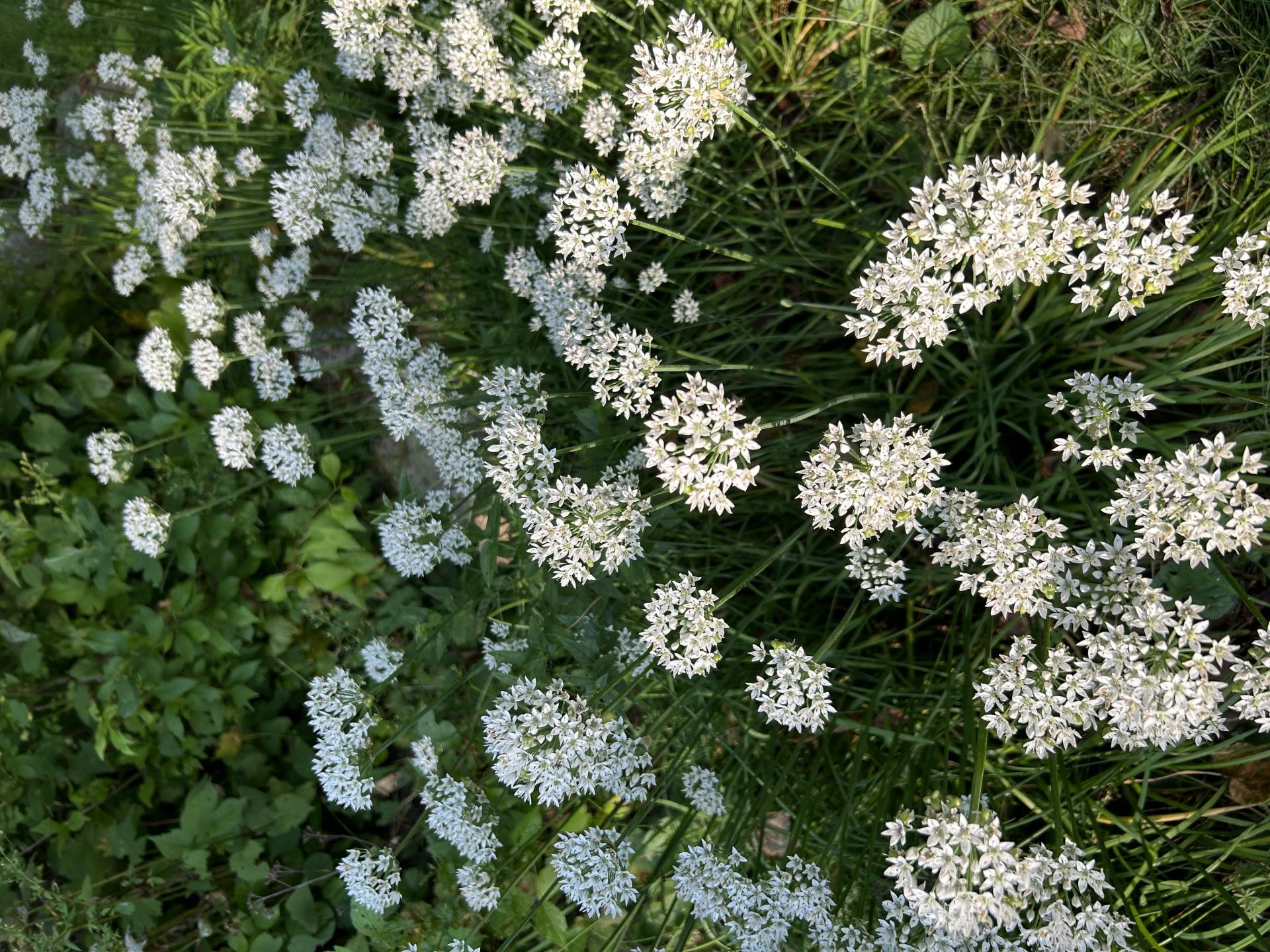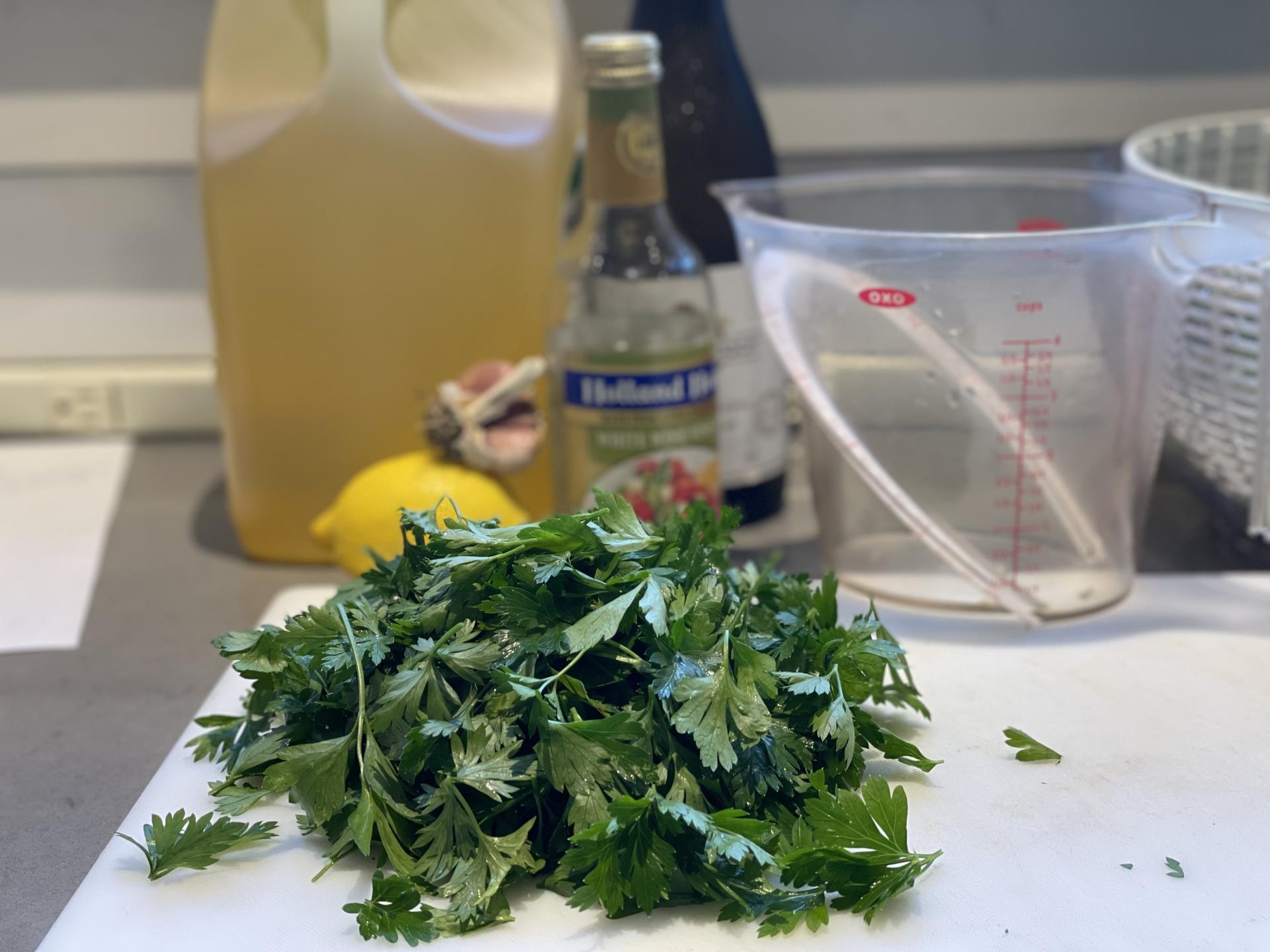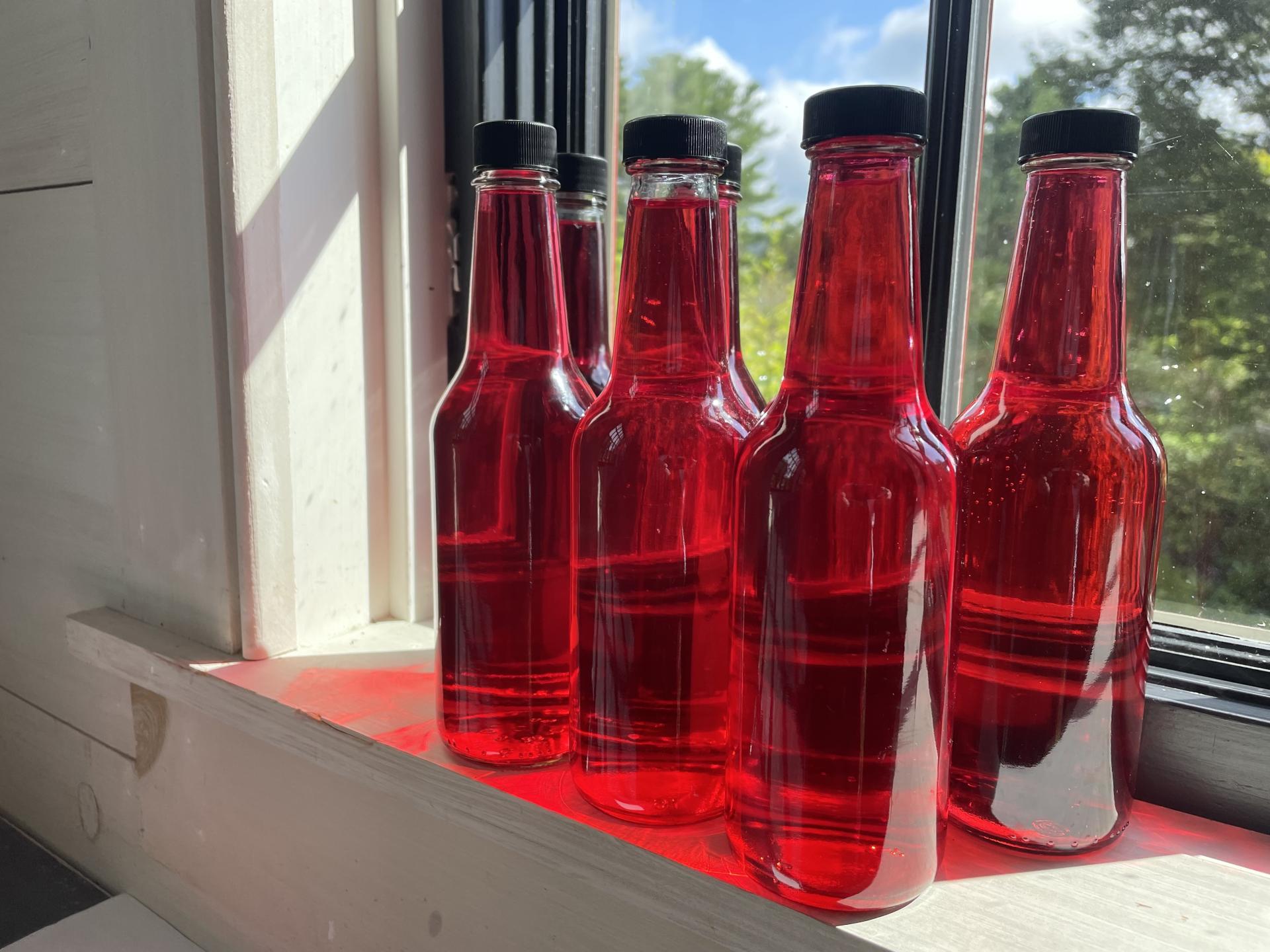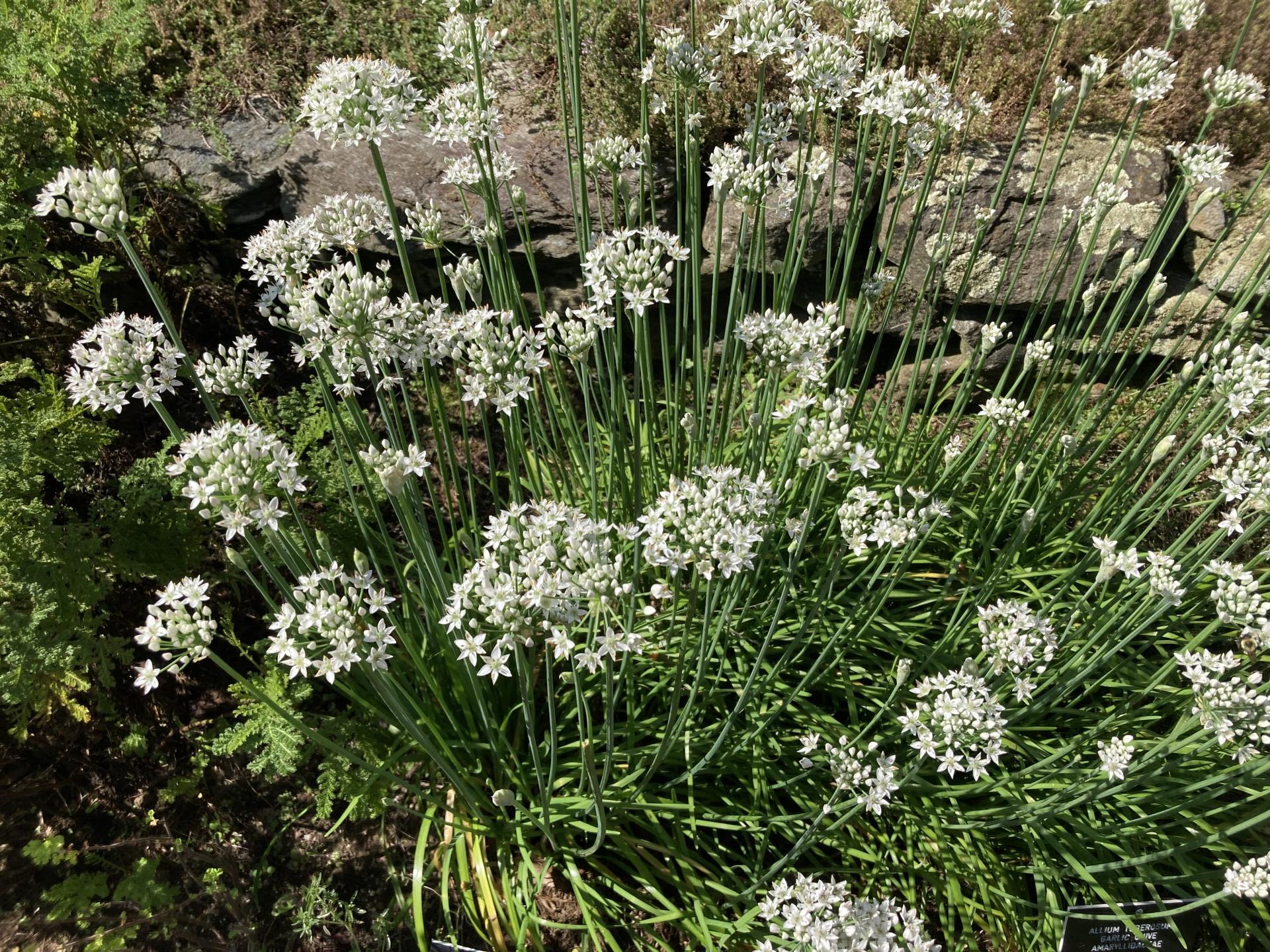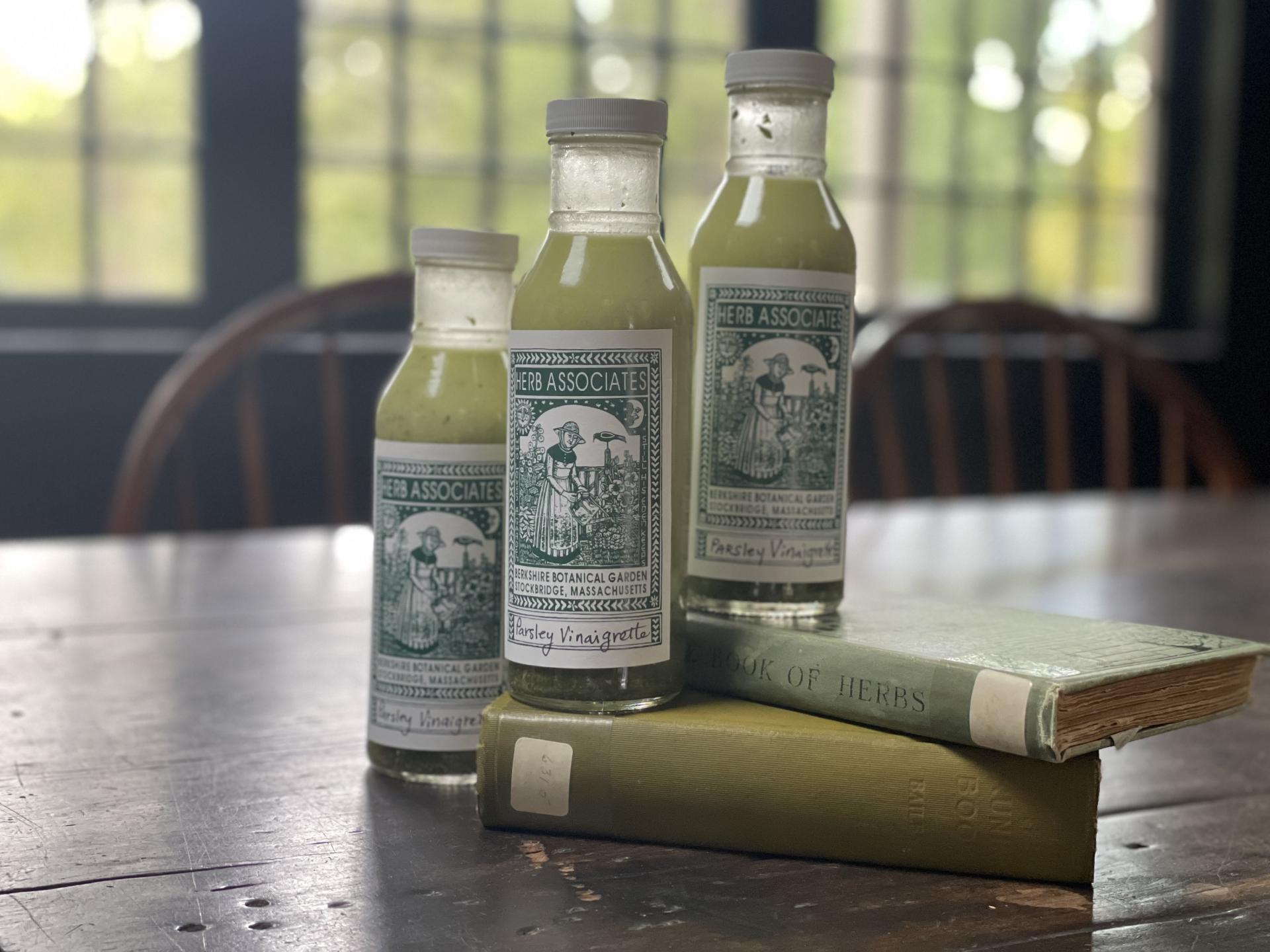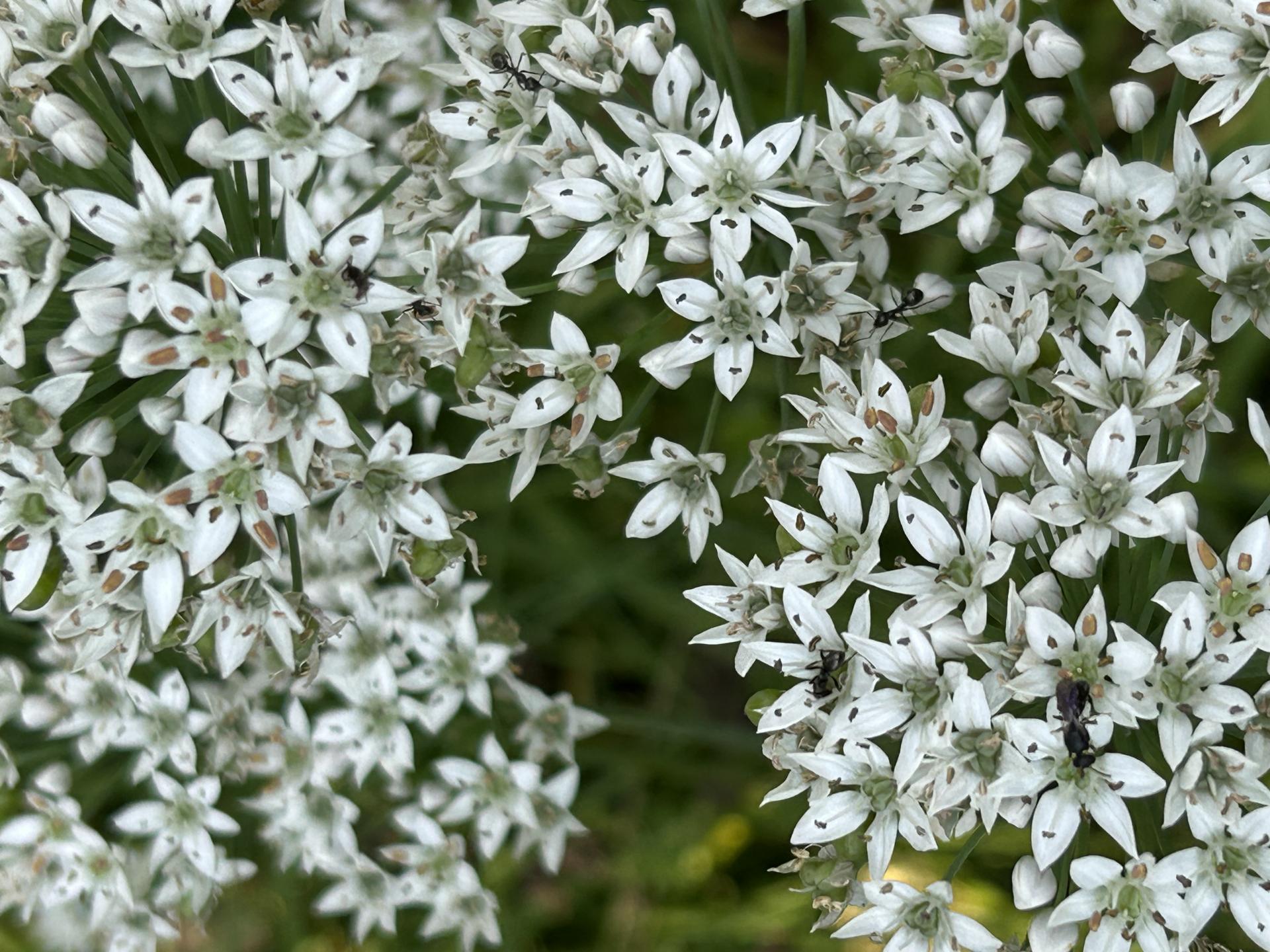You are here
Herb of the Week: Garlic Chives (Allium tuberosum)
Herb of the Week: Garlic Chives (Allium tuberosum)
by Barbara Smith
Herb of the Week: Garlic Chives (Allium tuberosum)
Garlic Chives are native to Asia, where they are highly regarded as a “jewel among vegetables.” Now widely cultivated and naturalized in many countries, this perennial herb grows in clumps with strappy green leaves about twelve inches long. It’s been described as looking like “extremely overgrown grass” or as having “lush green shoots.” The plants prefer full sun and well-drained soil and are hardy to Zone 3.
Unlike most of its allium relatives, garlic chives bloom in late summer, with delicately scented white flowers forming a small sphere shape. The blossoms attract bees, butterflies, and other pollinators. The faded blossoms should be removed before the seed ripens, as the plant is a prolific self-sower to the point of being considered aggressive or even invasive by some.
Turning to kitchen uses, the plant is edible from leaf to flower. Garlic chives’ flavor combines the delicate herbal note of chives with a robust note of garlic. Many Asian countries feature garlic chives as an important recipe ingredient; for example, Chinese dishes often steam the leaves whole or simmer them in broths or thick soups. They also use garlic chives in stir-fry recipes. Japanese dishes frequently use “nira” (garlic chives) in meat and seafood dishes. A traditional recipe for Thailand’s popular dish Pad Thai contains garlic chives. Other delicious products containing garlic chives are vinegars, marinades, and dipping sauces. Garlic chives can also be used in the same dishes as ordinary chives – for example, in compound butter – not really as a substitute, but for a similar flavor.
It is reported that Vincent Van Gogh used garlic chives as an inspiration for a painting he created in 1887 in Paris, which depicts a pot of chives against a wallpaper background, in which he accurately depicted the flat leaves of the plant. Alas, I was unable to find a photograph of the painting to share.
WHAT’S HAPPENING IN THE KITCHEN: TEAS and MORE!
The Herb Associates Kitchen Team took the next steps to introduce a variety of herbal teas. Spearmint, peppermint, chamomile, lavender, and lemon verbena cuttings have been harvested and dried, and this week, the Team stripped the leaves and blossoms from the stems and packed the jars with the results. What a lovely scent filled the kitchen! Tea lovers may look forward to individual herbal teas based on spearmint, peppermint and chamomile, as well as a new blend of lavender and lemon verbena to try. The tea products should be available next week.
In addition, mint jelly was prepared, and two new batches of vinegar – one dill and another opal basil -- are infusing now, to be bottled next week. Finally, parsley vinaigrette dressing rounded out the production. All Herb Associates’ products are sold in the BBG Gift Shop, with proceeds to support the Garden.
The Berkshire Botanical Garden’s Herb Associates began in 1957 and have been making and selling products for the benefit of BBG ever since. At BBG, the Herb Associates oversee a display garden and production garden, both located near the Center House. Members/volunteers meet every Tuesday morning during the late spring through mid-autumn each year, coinciding when the gardens themselves are open to the public. Members plant, weed and tend the gardens, as well as harvest and process the variety of herbs.
Help Our Garden Grow!
Your donation helps us to educate and inspire visitors of all ages on the art and science of gardening and the preservation of our environment.
All donations are 100 percent tax deductible.

